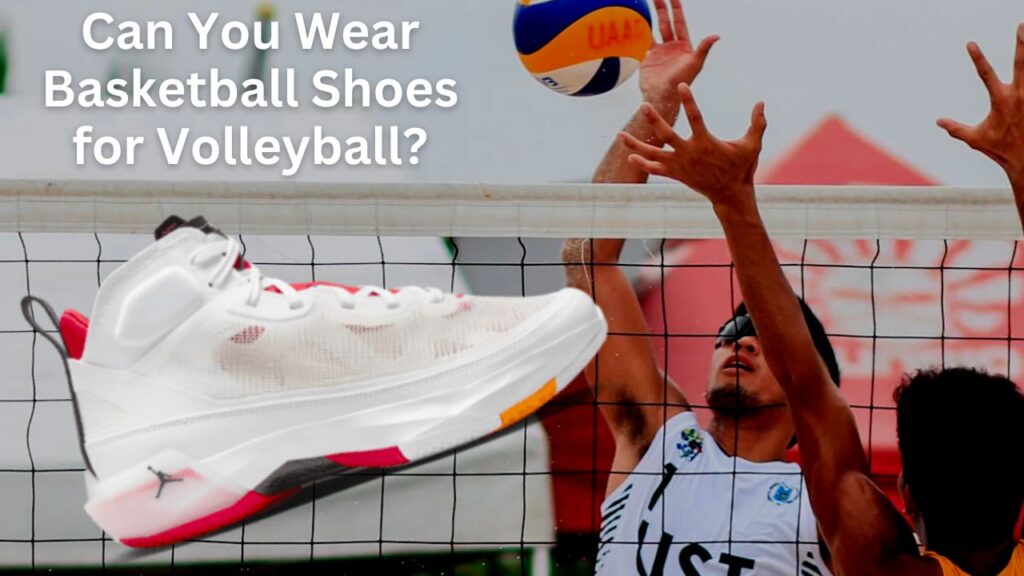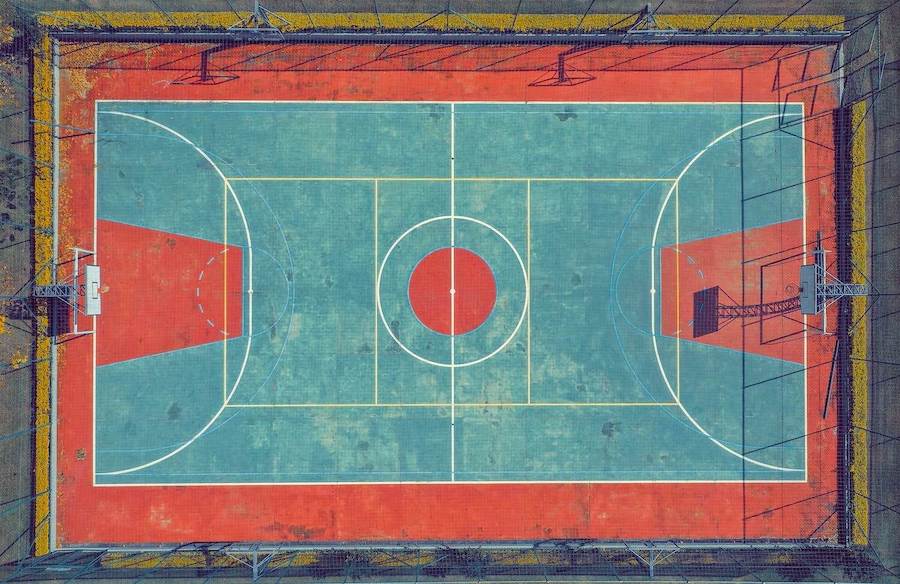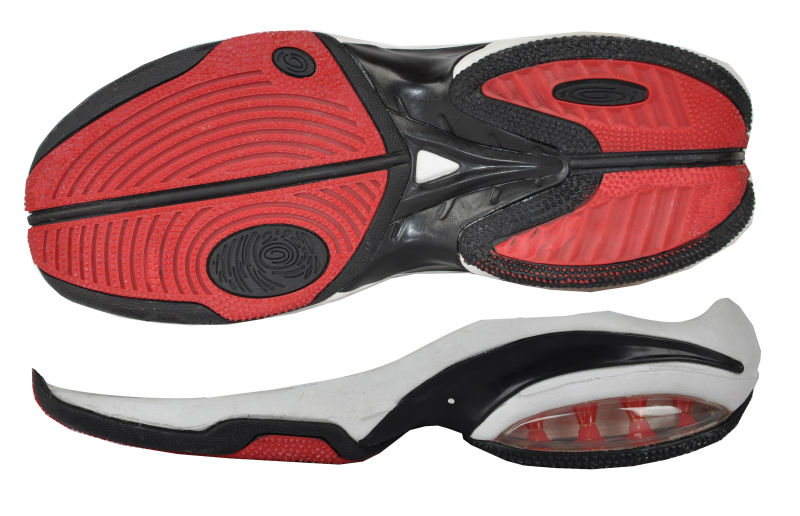This post is focused on the topic of whether or not basketball shoes can be worn for playing volleyball. With the popularity of both sports and the similarities in their playing surfaces, many athletes may be considering using one type of shoe for both activities.

The purpose of this post is to provide information and guidance to athletes, coaches, and trainers on the topic of using basketball shoes for volleyball. The post will discuss the importance of proper footwear in volleyball, compare and contrast the design and features of basketball shoes and volleyball shoes, and provide recommendations on how to choose the right basketball shoes for volleyball. Additionally, it will also provide information on the potential risks and drawbacks of using basketball shoes for volleyball. The Ebook aims to help readers make informed decisions about their footwear choices for playing volleyball.
The Importance of Proper Footwear in Volleyball
Explanation of how proper footwear affects performance
Proper footwear is essential for any athlete, and volleyball players are no exception. The right shoes can help prevent injuries, improve performance, and enhance overall comfort on the court. The demands of volleyball put a lot of stress on the feet and ankles, and players need shoes that can provide the necessary support and protection.
When it comes to volleyball, the shoes must provide enough traction on the court to ensure stability and allow for quick and agile movements. This is especially important for players who frequently jump and land on the hardwood surface. Without proper traction, players may slip and fall, resulting in injuries such as sprained ankles. Additionally, the shoes must provide enough support to the feet and ankles to prevent injuries such as rolled ankles or stress fractures.
Proper footwear also plays a key role in overall performance. Shoes that are too heavy or stiff can slow down players and limit their mobility. On the other hand, shoes that fit well and provide the right amount of support and traction can help players move more quickly and efficiently on the court. This can lead to better reaction times, improved jumping ability, and enhanced agility.
Discussion of specific volleyball shoe features
Volleyball shoes are designed specifically for the demands of the sport. They typically have a flatter and wider sole than other types of athletic shoes, which helps to provide more stability and support. Additionally, volleyball shoes often have a higher ankle than other types of athletic shoes, which helps to protect the ankle from sprains and other injuries. They also come with a rubber sole that provides much-needed traction on the hardwood surface.
The uppers of the shoes are often made of synthetic materials such as mesh or leather, which helps to keep the shoes light and breathable. This is important for preventing overheating and keeping the feet cool and dry during play. The footbed is also designed with cushioning and arch support to provide extra comfort and support for the player’s foot.
In summary, proper footwear is crucial for volleyball players in order to ensure safety, prevent injuries and enhance performance. Volleyball shoes are specifically designed to meet the demands of the sport, with features such as a flatter and wider sole, higher ankle, rubber sole, synthetic uppers, and cushioning footbeds. These features help to provide the necessary support, protection, traction, and comfort that volleyball players need to perform their best on the court.

Basketball Shoes vs. Volleyball Shoes
Comparison of the design and features of basketball shoes and volleyball shoes
Basketball shoes and volleyball shoes are both designed for sports that are played on a hardwood surface, but they have some key differences in their design and features.
Basketball shoes are designed to provide support and protection for the feet and ankles, but they also need to be lightweight and flexible to allow for quick, agile movements on the court. They typically have a high-top design to provide extra support for the ankles and have a more durable rubber outsole for better traction. Basketball shoes often have a herringbone pattern on the outsole, which allows for quick cuts and sudden stops on the court. Basketball shoes also have a more cushioned midsole to help with shock absorption and provide more comfort for the player.
On the other hand, volleyball shoes are specifically designed to meet the demands of jumping and landing on a hardwood surface. They have a flatter and wider sole than basketball shoes, which helps to provide more stability and support for the feet and ankles. Volleyball shoes also have a higher ankle than basketball shoes, which helps to protect the ankle from sprains and other injuries. The outsole of volleyball shoes is typically made of rubber which provides the necessary traction on the hardwood surface. Volleyball shoes also have a more minimalistic design than basketball shoes and often have a more breathable upper to keep the feet cool and dry during play.
Discussion of the pros and cons of using basketball shoes for volleyball
While basketball shoes and volleyball shoes share some similarities, such as being designed for use on a hardwood surface, they are not interchangeable. Using basketball shoes for volleyball can have both pros and cons.
One potential pro is that basketball shoes are widely available and are often less expensive than volleyball shoes. This can be an advantage for athletes who are on a tight budget and may not want to invest in a separate pair of shoes for each sport. Additionally, basketball shoes often have a more stylish design and come in a wider variety of colors and patterns, which can be appealing to athletes who are looking for a shoe that is both functional and fashionable.
However, there are also some significant cons to using basketball shoes for volleyball. The most significant disadvantage is that basketball shoes are not designed to meet the specific demands of the sport of volleyball. They may not provide the same level of support, protection, and traction as volleyball shoes. Additionally, basketball shoes are often heavier and less flexible than volleyball shoes, which can limit mobility on the court and slow down players.
In summary, while basketball shoes and volleyball shoes share some similarities, they are not interchangeable. Basketball shoes are designed for the sport of basketball, and volleyball shoes are designed for the sport of volleyball. Using basketball shoes for volleyball can have both pros, such as being widely available and less expensive, and cons, such as not providing the same level of support, protection and traction as volleyball shoes. It is important for players to weigh the pros and cons before making a decision on which shoes to wear while playing volleyball.
Factors to consider when choosing shoes for volleyball
Fit and comfort
The most important factor to consider when choosing shoes for volleyball is fit and comfort. The shoe should fit snugly and comfortably, without causing any discomfort or pain. A good fit ensures that the shoe will provide the necessary support and protection for the foot and ankle during play. It’s important to try the shoes on and walk around in them to ensure that they feel comfortable and supportive.
Traction and grip
Another important factor to consider is the traction and grip of the shoe. Volleyball shoes need to provide adequate traction and grip on the hardwood surface to allow players to move quickly and change direction without slipping. A shoe with a rubber outsole is typically the best option for volleyball as it provides the necessary traction and grip on the court.

Support and protection
Volleyball shoes should also provide support and protection for the feet and ankles. This includes a high-top design to provide extra support for the ankles, as well as cushioning in the midsole to help with shock absorption. It’s important to look for shoes that have been specifically designed for volleyball as they are more likely to provide the necessary support and protection.
Durability
Durability is another important factor to consider when choosing shoes for volleyball. Volleyball shoes need to be able to withstand the wear and tear of regular play. Look for shoes that are made from high-quality materials and have a sturdy construction. Also, it’s important to consider the outsole and it’s durability as well.
Breathability
Breathability is also an important factor to consider when choosing shoes for volleyball. Volleyball is a sport that requires a lot of movement and can cause the feet to sweat. It’s important to look for shoes that have a breathable upper to keep the feet cool and dry during play.
In summary, when choosing shoes for volleyball, it’s important to consider factors such as fit and comfort, traction and grip, support and protection, durability, and breathability. These factors will help to ensure that the shoe provides the necessary support and protection for the feet and ankles during play, and also help to improve overall performance. It’s important to try the shoes on and walk around in them before making a purchase to ensure that they feel comfortable and supportive.
Advantages and disadvantages of using basketball shoes for volleyball
Advantages:
- Familiarity: Some players may feel more comfortable using basketball shoes for volleyball because they are already familiar with the fit and feel of these shoes. They may also prefer the high-top design of basketball shoes for the added support and protection it provides for the ankles.
- Versatility: Basketball shoes are designed for a variety of different sports and activities, which means they can be used for multiple purposes. This can be an advantage for players who participate in both basketball and volleyball and don’t want to have to purchase multiple pairs of shoes.
- Cost: Basketball shoes are often less expensive than volleyball shoes. This can be an advantage for players who are on a budget and want to save money on shoes.
Disadvantages:
- Traction and grip: Basketball shoes are designed for a different type of surface and may not provide the same level of traction and grip as volleyball shoes. This can make it harder for players to move quickly and change direction on the court.
- Support and protection: Volleyball shoes are specifically designed for the sport and may provide more support and protection for the feet and ankles than basketball shoes. This can be important for players who are at a higher risk of injury.
- Durability: Basketball shoes may not be as durable as volleyball shoes. This can be a problem for players who play volleyball regularly and need a shoe that can withstand the wear and tear of regular play.
- Breathability: Basketball shoes may not be as breathable as volleyball shoes, which can be a problem for players who need to keep their feet cool and dry during play.
In summary, while basketball shoes can be used for volleyball, they may not provide the same level of support, protection, traction, grip, and breathability as shoes specifically designed for volleyball. They may not be as durable as well. However, using basketball shoes for volleyball can be an advantage for some players, particularly for those who are already familiar with the fit and feel of these shoes and those who participate in both basketball and volleyball. It’s important for players to weigh the advantages and disadvantages of using basketball shoes for volleyball before making a purchase.
Conclusion
In conclusion, while it is possible to wear basketball shoes for volleyball, it may not be the best option for all players. Volleyball shoes are specifically designed for the sport and may provide more support, protection, traction, grip, and breathability than basketball shoes. It’s important to consider factors such as fit and comfort, traction and grip, support and protection, durability, and breathability when choosing shoes for volleyball.
It’s also important to note that using basketball shoes for volleyball may not be suitable for players who play regularly and need a shoe that can withstand the wear and tear of regular play. Additionally, players who are at a higher risk of injury may want to consider using shoes specifically designed for volleyball to provide additional support and protection for the feet and ankles.
However, some players may prefer to use basketball shoes for volleyball because they are already familiar with the fit and feel of these shoes or because they participate in both basketball and volleyball and don’t want to have to purchase multiple pairs of shoes. Ultimately, the decision of whether to use basketball shoes for volleyball should be based on the individual player’s needs and preferences.
It’s also important to note that regardless of what type of shoe you use for volleyball, it’s essential to keep your shoes clean and well-maintained. This includes regularly cleaning the shoes and replacing them when they become worn out. Properly caring for your shoes will help to ensure that they provide the necessary support and protection for your feet and ankles during play, and also help to improve overall performance.
In summary, while it is possible to wear basketball shoes for volleyball, it may not be the best option for all players as it may not provide the same level of support, protection, traction, grip and breathability as shoes specifically designed for volleyball. It’s important to consider the factors of fit, comfort, support, protection, durability, and breathability when choosing shoes for volleyball and make a decision based on individual needs and preferences.